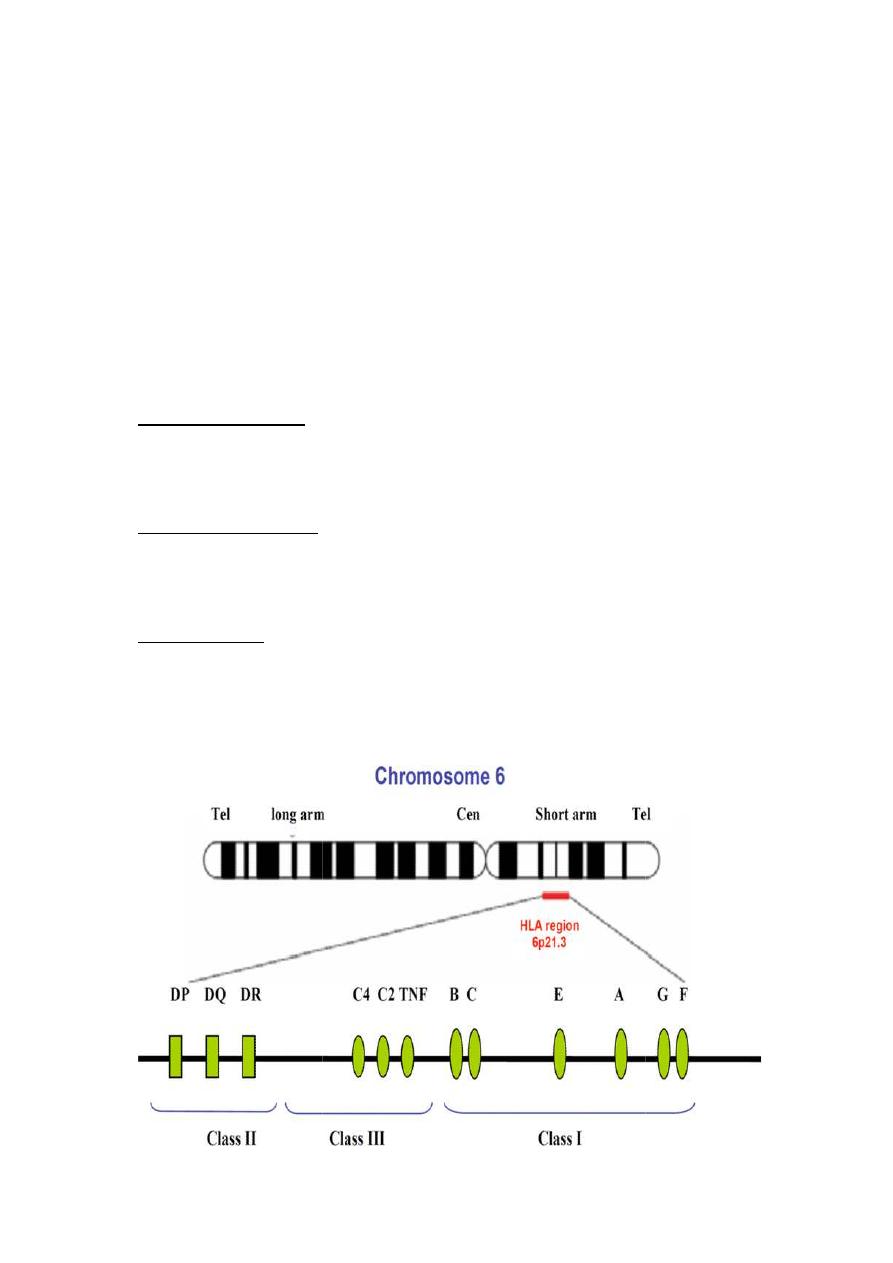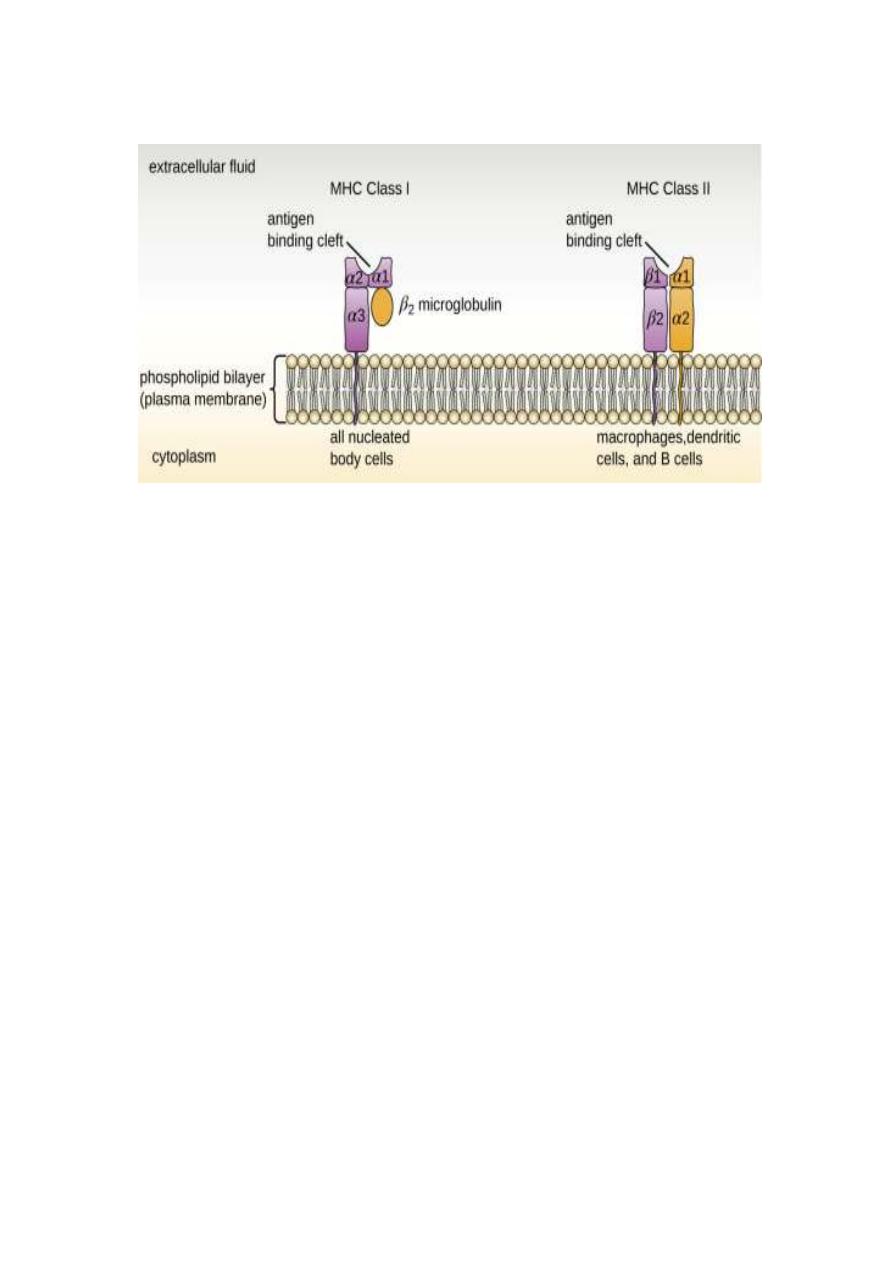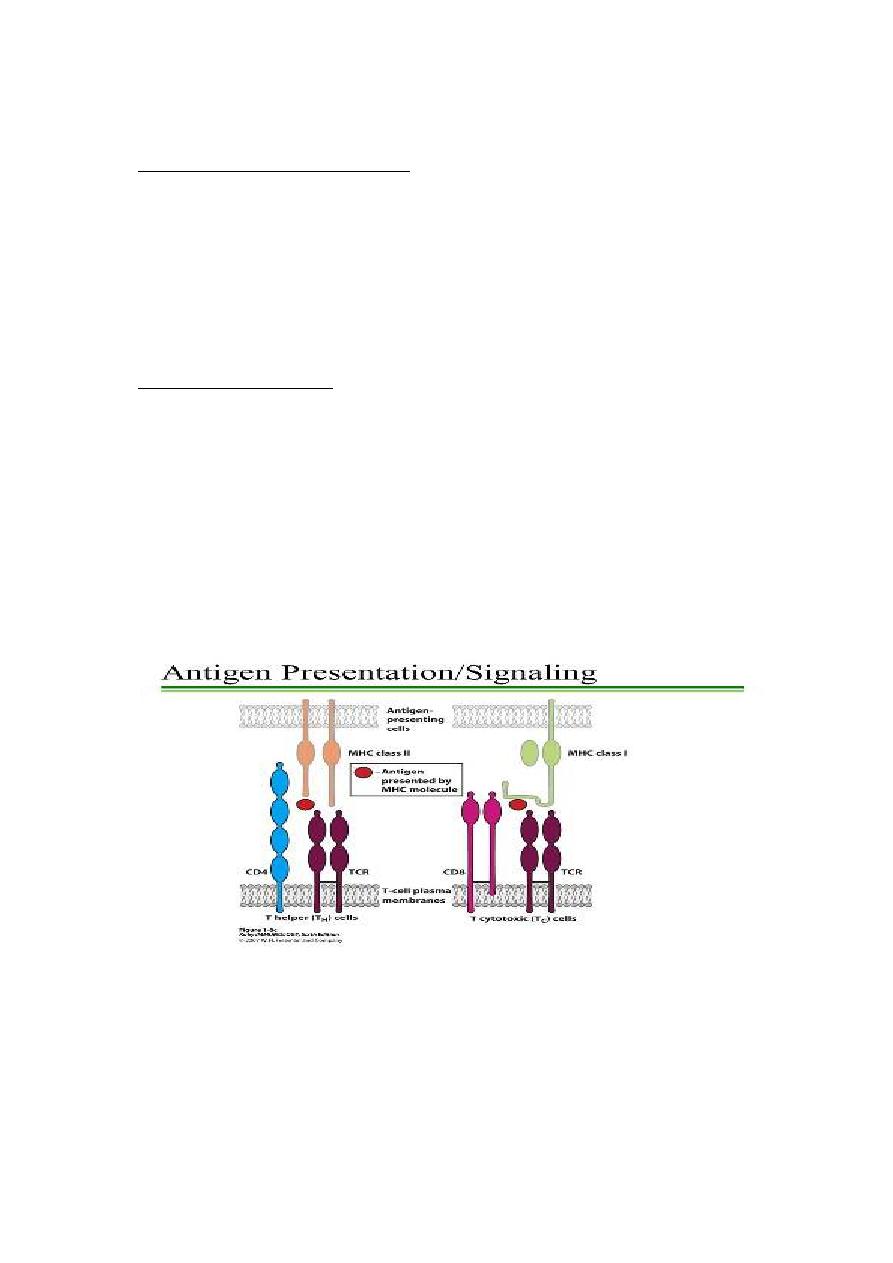
Immunology of organs
Objectives
The objectives of this lecture are to know
1. The major histocompatibility complex gene.
2. The major histocompatibility complex antigens.
3. Molecular structure of MHC antigens.
4. Specificity of HLA Antigens.
Introduction
• A primary objective of the immune system is to protect our bodies
against pathogens.
• MHC include many genes responsible for coordinating the immune
response.
• Genes that determine both innate and adaptive immunities and thus
influences responses to pathogens (viruses, bacteria, fungi, and
parasites), transplantation, autoimmunity, cancer biology, vaccinations,
responses to drugs, and possibly other functionalities presently
unknown.
Major histocompatibility complex (MHC)
• The MHC are membrane-bound glycoproteins that are closely related
in both structure and function.
• Previously known as human leucocyte antigens (HLA).
• In 1980 Nobel Prize has been awarded to Snell for his work that
discovered the importance of MHC in transplantation and organ
rejection.
lect:1
Dr. Khalid Waleed
M.B.ch.B., Msc., PhD. Immunology

The major histocompatibility complex gene
Comprises a genomic region that has evolved to include many genes
responsible for coordinating
histocompatibility complex
encode proteins that determine whether a tissue
individuals will be accepted or rejected.
The MHC gene: It contains about 4000 kb, 260 genes on the short arm
of chromosome 6. The MHC gene encodes three classes of molecules:
Class I MHC genes encode glycoproteins expressed on t
nucleated cells and platelets
sperms or RBCs.
Class II MHC genes
the surfaces of the antigen presenting cells (
dendritic cells).
Class III genes encode several different proteins (complement factors and
molecules involved in inflammation).
The MHC gene
The major histocompatibility complex gene
Comprises a genomic region that has evolved to include many genes
coordinating the immune response. It is named the
histocompatibility complex from the fact that the genes in this region
encode proteins that determine whether a tissue transplanted between two
individuals will be accepted or rejected.
: It contains about 4000 kb, 260 genes on the short arm
The MHC gene encodes three classes of molecules:
encode glycoproteins expressed on the surface of all
nucleated cells and platelets, and not present on trophoblast cells,
encode glycoproteins expressed predominantly on
the surfaces of the antigen presenting cells (macrophages, B
encode several different proteins (complement factors and
molecules involved in inflammation).
Comprises a genomic region that has evolved to include many genes
It is named the
from the fact that the genes in this region
transplanted between two
: It contains about 4000 kb, 260 genes on the short arm
The MHC gene encodes three classes of molecules:
he surface of all
, and not present on trophoblast cells,
encode glycoproteins expressed predominantly on
macrophages, B-cells and
encode several different proteins (complement factors and

Major histocompatibility complex
What are the functions of MHC?
The main function of both class I and class II MHC molecules is to
bind peptides derived from self or nonself antigens and then traffic to the
cell surface, where these peptides can be displayed, or presented, for
recognition by T-cells via the T-cell receptors (TCR).
MHC 1 presents of endogenous peptide antigens to CD8
+
T-cells
(become cytotoxic and can kill the cells that present the pathogen-derived
peptides).
MHC II primarily presents exogenous antigenic peptides to CD4
+
T-
cells (that can can stimulate B cells to produce antigen-specific
antibodies).
Class III MHC participates in different aspects of immune response.
HLA molecules play a key role in governing transplant rejection and
appear to regulate placental development in pregnancy.
Cancerous cells modify expression of their HLA genes to avoid
recognition by the immune response

Molecular structure of MHC antigens
MHC Class I molecule structure:
It is composed of 45-kDa α chain and 12-kDa β2-microglobulin
molecule. The α chain has three external domains, which are α1, α2, and
α3 and transmembrane segment followed by short intracellular tail. The
α1and α2 domains interact together to form the peptide-binding groove.
Both α1 and α2 domains have disulphide bonds (S-S bond).
MHC class II structure: It contains 2 different polypeptide chains, which
are 33-kDa α chain, and a 28-kDa β chain, they associate together by non
covalent bonds. The α and β chains are membrane bound glycoproteins
have a trans-membrane segment and have two external domains which
are α1 and α2 for α chain and β1 and β2 domains for β chain. Each chain
has trans-membrane portion and tail cytoplasmic part.

Specificity of HLA Antigens:
The α chain of class I (alpha-1 domain) contains the antigen binding
groove and constant domains. They can bind to 8 – 10 amino acids
peptide derived from endogenous antigens.
The class II antigen has also a single peptide-binding groove (alph-1 and
beta 1), which binds to 13 – 18 amino acids derived from exogenous
antigens.
The alpha chain of class II has variable (V), Joining (J) and constant (C)
regions, while beta chain has VDJC regions (D is diversity). The
specificity of these chains is in alpha-1 and beta-1 domains in particular
the latter one. Due to the similarity between the structures of Ig & HLA
antigens, the latter are called Histoglobulins.
Class I and II molecular polymorphism
MHC inherited from both parents. Haplotype is referred to the set
of genes that are inherited from single parent. So, there are MHC genes
of maternal and paternal origin. The genes of both haplotypes are co-
dominant. Each individual has a formula for the alleles in both
haplotypes.
Human leukocyte antigen (HLA) class I and class II genes are extremely
polymorphic.
•
Each HLA allele encodes molecules with different peptide-binding
properties that influence the particular peptides recognized by the T cells.
•
The sequence of the HLA gene thereby determines the peptide
recognition features of the adaptive immune response.
several hundred different allelic variants of class I and class II MHC
molecules have been identified in human. There are about 767 alleles for
A, 1178 for B, 439 for C, and more than 900 for the D-related (DP, DQ

& DR) genes. There is a possibility of 1/ 2,000,000 for a person to have
another identical individual.
MHC alleles and susceptibility to certain diseases
Some HLA alleles occur at a much higher frequency in people
suffering from certain diseases than in the general population. The
diseases associated with particular MHC alleles include:
• Autoimmune diseases
• Susceptibility or resistance to certain viral diseases
• Disorders of complement system
• Different allergies
Diseases and their associated HLA-alleles
• Systemic lupus erythematous (SLE): HLA-DR3
• Rheumatoid arthritis : HLA-DR4
• Myasthenia gravis : HLA-B8.
• Ankylosing spondylitis: HLA-B27 allele have 90 times relative risk to
get ankylosing spondylitis than general population.
• Celiac disease: It is an allergy to gluten. People who carry HLA-DQ2
allele have 50 times relative risk to get celiac disease.
References:
1. Clinical immunology: principles and practice 5
th
Edition.
2. How the immune system works: 5
th
Edition.
